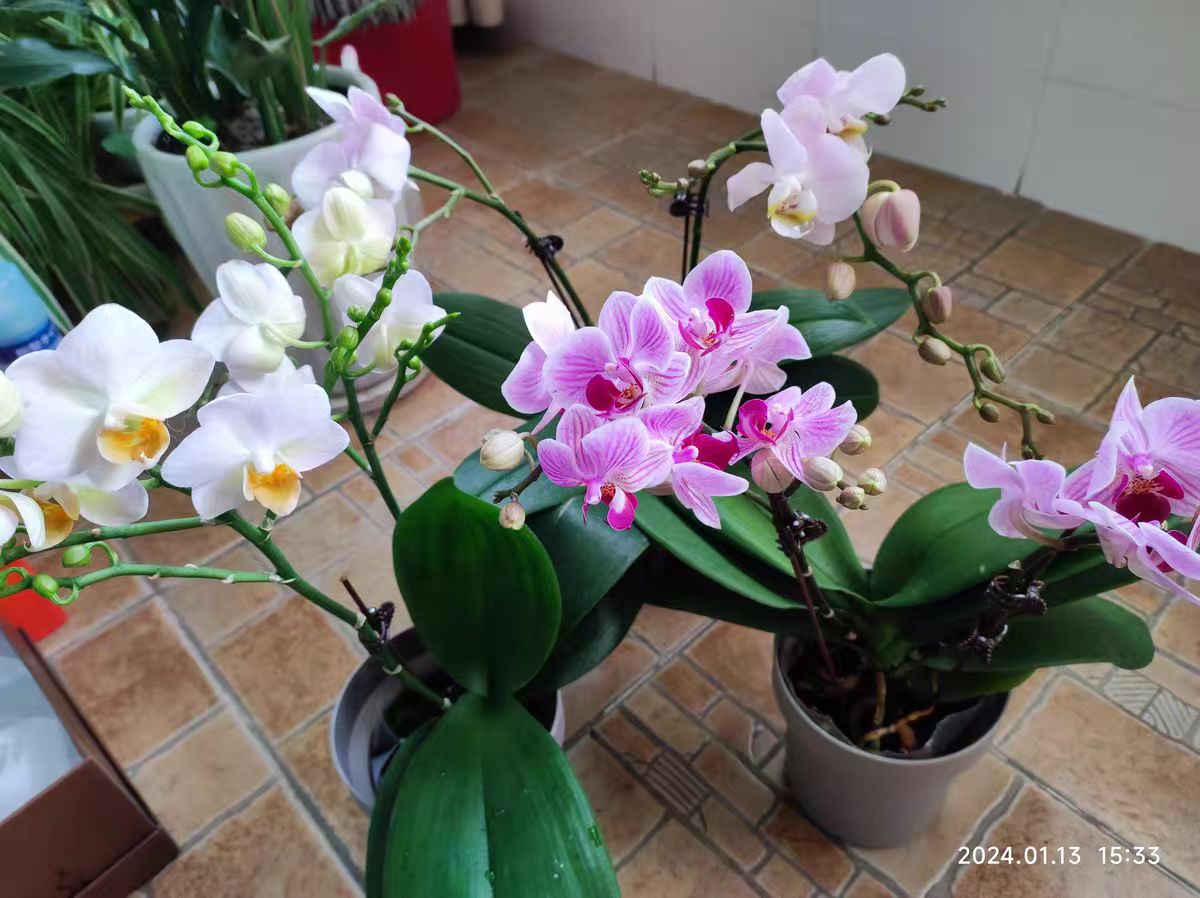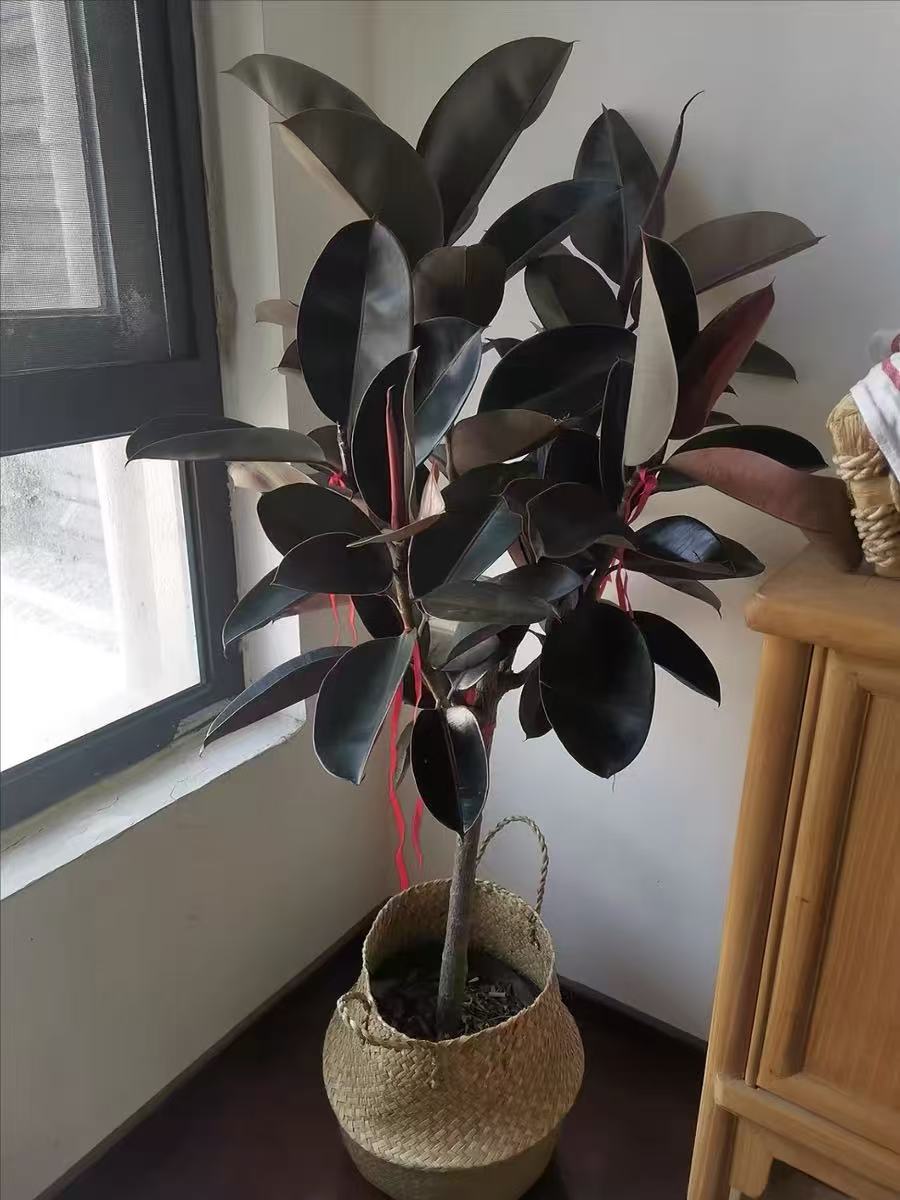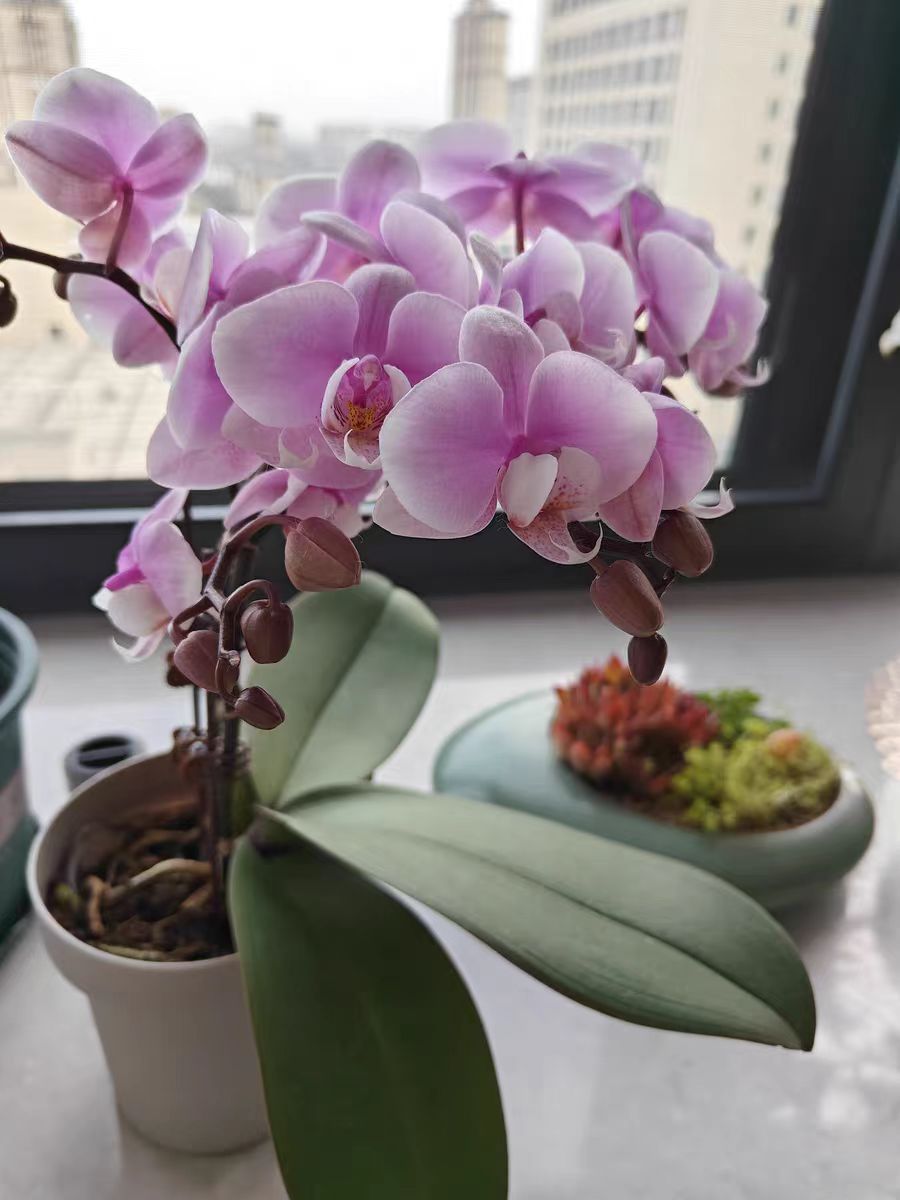Phalaenopsis is a perennial evergreen herbaceous plant. After the flowering period of Phalaenopsis, many flower lovers start to worry: After the flowers wither, can I still take good care of my Phalaenopsis? Can it bloom beautifully again next year? The answer is yes. As long as it is properly cared for, the Phalaenopsis is likely to bloom again in the second year.
Basic care after the flowers wither:
Cut the flower stems: When the flower stems of the Phalaenopsis begin to wither, they should be cut off in a timely manner. This step can not only prevent the flower stems from continuing to consume the nutrients of the plant, but also prompt the plant to concentrate more energy on root growth and the sprouting of new buds. When pruning, use a clean pair of scissors and apply an appropriate amount of fungicide to the cut to prevent the infection of germs.
Appropriate temperature: Phalaenopsis prefers a warm and humid growth environment, and its suitable growth temperature is usually between 20 - 30 degrees Celsius. In winter, when the indoor temperature is lower than 10 degrees Celsius, the growth of Phalaenopsis will be inhibited. Therefore, it should be moved to a warm place indoors in a timely manner and necessary heat - preservation measures should be taken. At the same time, avoid placing the Phalaenopsis near a heat source or in the path of direct cold air to prevent damage to the plant.
Light management: Phalaenopsis likes a semi - shady growth environment. Under natural conditions, it often grows under the shade of trees and is nourished by scattered light. Therefore, when caring for it at home, place the Phalaenopsis in a location with sufficient scattered light indoors, such as near an east - facing or west - facing window. When the sunlight is strong in summer, do a good job of shading for the Phalaenopsis to prevent the leaves from being burned. When the sunlight is gentle in winter, the light exposure time can be appropriately increased to promote the growth and flowering of the plant.
Water management: The roots of Phalaenopsis have a strong water - storage capacity, but they are also very sensitive to waterlogging. Therefore, when watering, follow the principle of "watering when the soil is dry and soaking thoroughly". That is, water the plant after the surface of the substrate is dry and water it thoroughly at one time. When the temperature is suitable in spring and autumn, water once or twice a week is sufficient. In summer with high temperature and winter with low temperature, the watering frequency should be appropriately reduced to prevent damage to the plant. At the same time, pay attention to maintaining air humidity. You can spray water around the plant regularly to increase humidity.
Fertilizer application: In the period after the flowers wither, the amount of fertilizer applied can be appropriately reduced to avoid excessive plant nutrition. When new buds begin to sprout, gradually resume the normal fertilization frequency. When fertilizing, choose fertilizers specifically formulated for orchids and dilute them according to the ratio on the instruction manual before watering. During the flower - bud differentiation period, in order to promote the formation and development of flower buds, phosphorus - potassium fertilizers such as potassium dihydrogen phosphate can be added.
How to prepare for next year's flowering:
Dormancy period management: Phalaenopsis needs an appropriate dormancy period to regain strength and accumulate nutrients. In autumn and winter, as the temperature gradually drops, Phalaenopsis will enter a dormant state. At this time, reduce the frequency of watering and fertilization, provide a lower temperature (about 15 - 18 degrees Celsius) and lower light intensity to help the plant pass through the dormant period smoothly.
Pot - changing and substrate selection: As Phalaenopsis grows, its roots will gradually fill the entire flower pot. Therefore, pot - changing should be carried out every 1 - 2 years to provide more growth space for the plant. When changing the pot, choose a cultivation substrate with good air permeability and drainage, such as sphagnum moss, bark, coconut coir, etc. These substrates not only have good water - retention and air - permeability, but also can provide the necessary nutrient support for the plant.
Pest and disease control: Pests and diseases are one of the important factors affecting the growth and ornamental value of Phalaenopsis. Therefore, during the maintenance process, regularly check the growth status of the plant. Once signs of pests and diseases are found, take measures to control them immediately. Fungicides or insecticides can be used for spraying control, but pay attention to diluting and using them according to the requirements on the instruction manual to avoid harming the plant.
As long as you master the correct maintenance methods and put them into practice, the Phalaenopsis is likely to bloom beautifully again in the second year. As one of the flower lovers, we should take good care of the life of every plant and let them thrive under our careful care.
How to care for a Phalaenopsis orchid after its flowers wither? Can it bloom again next year?

Share with
Tagged in :




Leave a Reply